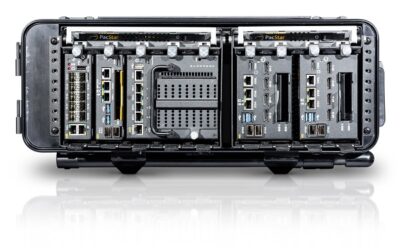Vidsel Test Range offers representative electronic warfare threats
Officials from the Vidsel Test Range which is owned and operated by Sweden’s FMV Defence Materiel Administration, and located in the north of the country, have shared with MONCh that they will enhance the representative Electronic Warfare (EW) threats that they deploy at the range to provide users with a highly representative threat environment. The officials continued that this will include the addition of Radio Frequency (RF) transmitters which will be used to replicate electronic threats such as ground-based air surveillance and Fire Control/Ground Controlled Interception (FC/GCI) radars which air crew may encounter during the conduct of air-to-air, air-to-ground and reconnaissance operations. The Vidsel Test Range is one of the world’s largest facilities with a permanent 962 square nautical miles (3,300 square kilometres) of airspace which can be used for flight and weapons testing, and a further 465.6 square nautical miles (1700 square kilometres) of additional airspace which can be made available adjacent to the permanently closed airspace as and when required.
Vidsel is one of three ranges in Western Europe where representative EW threats can be simulated, the other two facilities being RAF Spadeadam in northwest England and the Multnational Aircrew Electronic Warfare Tactics Facility, better known as the Polygon Range, which is situated on the Franco-German border and is operated jointly by the air forces of both countries and the US Air Force. The Vidsel Test Range, officials continued, already incorporates a number of representative EW threats which include Textron System’s Mallinas Ultra-Violet/Infra-Red (UV/IR) simulators, two Vitro tracking radars, a Saab Giraffe series ground-based air surveillance radar, Tracka mobile radar and Global Positioning System (GPS) jammers provided by the Swedish Defence Research Agency.
The Mallina systems are intended to simuate threats presented by IR-guided Surface-to-Air Missiles (SAMs), which can typically include Man-Portable Surface-to-Air Defence Systems (MANPADS) such as the Russian KBM 9K333 Verba MANPADS which employs UV/IR guidance. The Vitro tracking radars can be programmed in such a way that they can represent the ground-based air surveillance and FC/GCI radars which accompany the 2K12 Kub (NATO reporting name SA-6 Gainful) mobile SAM system, in the form of its SURN 1S91 target acquisition and continuous wave illuminator FC/GCI radar, and also the 9K33 Osa (NATO reporting name SA-8 Gecko) mobile SAM system and its accompanying 1S51M3 (NATO reporting name Land Roll) C-band (5.25 gigahertz/GHz to 5.925GHz) target acquisition radar, P-40 Ultra-High Frequency (UHF: 420 megahertz/MHz to 450MHz/890MHz to 942MHz) ground-based air surveillance radar, P-15/19 C-band target acquisition radar and PRV-9/16 UHF height-finding radar.
While the Giraffe radar can work as a direct representative EW threat, the Vitro systems can have their waveforms and propagation characteristics adapted to simulate certain characteristics of these, and other, threat radars. Officials from the FMV told MONCh that typically the range’s ground-based radars will be adapted to play the role of the threat radar, while an aircraft’s individual EW threat libraries will be augmented to detect the emissions of these radars, and to treat them as representative of a 2K12’s or 9K33’s hostile radar systems for the purpose of the exercise. This can then be used to help train an aircrew to perform close air support, air interdiction or the attack of operational-level targets in an accurately representative environments where their aircraft encounters electronic threats and then must initiate countermeasures and perform defensive manoeuvres to protect their aircraft. Interestingly, the Vidsel Test Range also has the Tracka trailer-mounted radar. This is in fact an Ericson PS-46A X-band (8.5GHz to 10.68GHz) fire control radar which equipped the Saab 37 Viggen series combat aircraft which can be moved around the range to represent ‘pop-up’ radar threats. In addition to these simulated electronic threats, the Vidsel Test Range can make use of other systems temporarily hired from other facilities such as the plethora of Warsaw Pact origin SAM batteries and accompanying apparatus which the Royal Air Force has available at RAF Spadeadam.

























